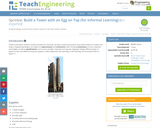
Students design, build and test towers made of craft sticks and/or dowels.
- Subject:
- Engineering and Information Technologies
- Material Type:
- Activity/Lab
- Provider:
- TeachEngineering
- Provider Set:
- TeachEngineering
- Date Added:
- 02/24/2020

Students design, build and test towers made of craft sticks and/or dowels.

In this activity, students learn about creating a design directly from a CAD (computer-aided design) program. They will design a tower in CAD and manufacture the parts with a laser cutter. A competition determines the tower design with the best strength:weight ratio. Students also investigate basic structural truss concepts and stress concentrations. Partnership with a local college or manufacturing center is necessary for the completion of this project.
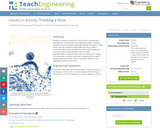
Students simulate the spread of a virus such as HIV through a population by "sharing" (but not drinking) the water in a plastic cup with several classmates. Although invisible, the water in a few of the cups has already be tainted with the "virus" (sodium carbonate). After all the students have shared their liquids, the contents of the cups are tested for the virus with phenolphthalein, a chemical that causes a striking color change in the presence of sodium carbonate. Students then set about trying to determine which of their classmates were the ones originally infected with the virus.
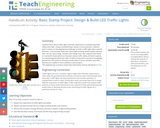
Students learn about traffic lights and their importance in maintaining public safety and order. Using a Parallax® Basic Stamp 2 microcontroller, students work in teams on the engineering challenge to build a traffic light with a specific behavior. In the process, they learn about light-emitting diodes (LEDs), and how their use can save energy. Students also design their own requirements based on real-world observations as they learn about traffic safety and work towards an interesting goal within the realm of what is important in practice. Knowledge gained from the activity is directly transferrable to future activities, and skills learned are scalable to more ambitious class projects.
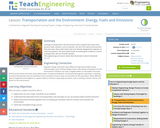
Looking at transportation and the environment, students learn that some human-made creations, such as vehicles, can harm the environment. They also learn about alternative fuels and vehicles designed by engineers to minimize pollution. The associated hands-on activity gives students a chance to design their own eco-friendly vehicle.
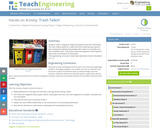
Students collect, categorize, weigh and analyze classroom solid waste. The class collects waste for a week and then student groups spend a day sorting and analyzing the garbage with respect to recyclable and non-recyclable items. They discuss ways that engineers have helped to reduce the accumulation of solid waste.
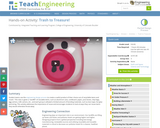
Student teams use the engineering design process to create a useful product of their choice out of recyclable items and "trash." The class is given a "landfill" of reusable items, such as aluminum cans, cardboard, paper, juice boxes, chip bags, egg cartons, milk cartons, etc., and each group is allowed a limited amount of bonding materials, such as duct tape, hot glue and string. This activity addresses the importance of reuse and encourages students to look at ways they can reuse items they would otherwise throw away.
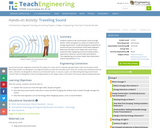
Students explore how sound waves move through liquids, solids and gases in a series of simple sound energy experiments. Understanding the properties of sound and how sound waves travel helps engineers determine the best room shape and construction materials when designing sound recording studios, classrooms, libraries, concert halls and theatres.
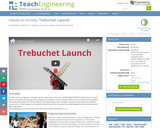
Students work as engineers to design and test trebuchets (in this case LEGO® MINDSTORMS® robots) that can launch objects. During the testing stage, they change one variable at a time to study its effect on the outcome of their designs. Specifically, they determine how far objects travel depending on their weights. As students learn about the different components of robot design and the specific function controls, they determine what design features are important for launching objects.
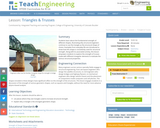
Students learn about the fundamental strength of different shapes, illustrating why structural engineers continue to use the triangle as the structural shape of choice. Examples from everyday life are introduced to show how this shape is consistently used for structural strength. Along with its associated activity, this lesson empowers students to explore the strength of trusses made with different triangular elements to evaluate the various structural properties.
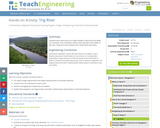
Students learn about and use a right triangle to determine the width of a "pretend" river. Working in teams, they estimate of the width of the river, measure it and compare their results with classmates.
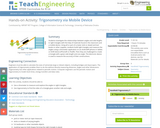
Students investigate the relationships between angles and side lengths in right triangles with the help of materials found in the classroom and a mobile device. Using all or part of a meter stick or dowel and text books or other supplies, students build right triangles and measure the angles using a clinometer application on an Android® (phone or tablet) or iOS® device (iPhone® or iPad®). Then they are challenged to create a triangle with a given side length and one angle. The electronic device is used to measure the accuracy of their constructions.
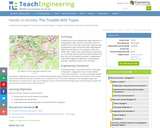
Students learn how to identify the major features in a topographical map. They learn that maps come in a variety of forms: city maps, road maps, nautical maps, topographical maps, and many others. Map features reflect the intended use. For example, a state map shows cities, major roads, national parks, county lines, etc. A city map shows streets and major landmarks for that city, such as hospitals and parks. Topographical maps help navigate the wilderness by showing the elevation, mountains, peaks, rivers and trails.
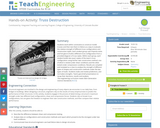
Students work within constraints to construct model trusses and then test them to failure as a way to evaluate the relative strength of different truss configurations and construction styles. Each student group uses Popsicle sticks and hot glue to build a different truss configuration from a provided diagram of truss styles. Within each group, each student builds two exact copies of the team's truss configuration using his/her own construction method, one of which is tested under shear conditions and the other tested under compression conditions. Results are compiled and reviewed as a class to analyze the strength of different types of shapes and construction methods under the two types of loads. Students make and review predictions, and normalize strengths. Teams give brief presentations to recap their decisions, results and analysis.
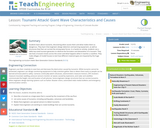
Students learn about tsunamis, discovering what causes them and what makes them so dangerous. They learn that engineers design detection and warning equipment, as well as structures that that can survive the strong wave forces. In a hands-on activity, students use a table-top-sized tsunami generator to observe the formation and devastation of a tsunami. They see how a tsunami moves across the ocean and what happens when it reaches a coastline. They make villages of model houses to test how different material types are impacted by the huge waves.
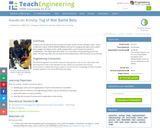
Students are introduced to the concepts of torque, power, friction and gear ratios. Teams modify two robotic LEGO® MINDSTORMS® vehicles by changing their gear ratios, wheel sizes, weight and engine power, while staying within a limit of points to spend on modifications. The robots face each other on a track with a string attaching one to the other. The winning robot, the one with the best adjustments, pulls the other across the line.
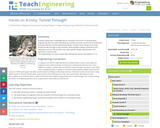
Students apply their knowledge about mountains and rocks to transportation engineering, with the task of developing a model mountain tunnel that simulates the principles behind real-life engineering design. Student teams design and create model tunnels through a clay mountain, working within design constraints and testing for success; the tunnels must meet specific design requirements and withstand a certain load.
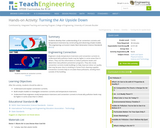
Students develop their understanding of air convection currents and temperature inversions by constructing and observing simple models.
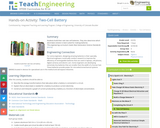
Students build their own two-cell batteries. They also determine which electrolyte solution is best suited for making batteries.
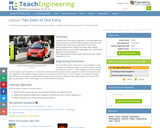
Students learn more about magnetism, and how magnetism and electricity are related in electromagnets. They learn the fundamentals about how simple electric motors and electromagnets work. Students also learn about hybrid gasoline-electric cars and their advantages over conventional gasoline-only-powered cars.